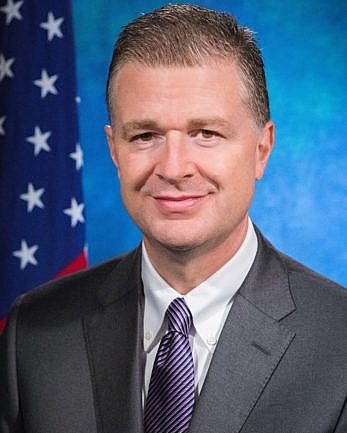US ambassador: Vietnam has done an exemplary job against COVID-19 disease
 |
| US Ambassador Daniel J. Kritenbrink |
Vietnam has stayed in control of the crisis, with no new infection over the last five days. In your opinion, what has helped Vietnam gain such achievements?
COVID-19 is having an enormous impact on the health of millions of people, on economies, and on societies everywhere. Vietnam has done an exemplary job of adopting substantial measures to contain the outbreak of COVID-19 within its borders.
The first measure I would like to mention is that Vietnam has adopted a whole-of-government approach by mobilising resources from all sectors. Besides, Vietnam has also been drawing the technical input of international partners, like the US Centers for Disease Control and Prevention (CDC), the World Health Organization (WHO), and United States Agency for International Development (USAID).
Additionally, I am also impressed with your country's developing evidenced-based guidelines and training healthcare and laboratory professionals to implement these guidelines down to the local level.
Another measure we must mention is that Vietnam has been proactively identifying cases and their contacts and monitoring them for additional signs of disease, as well as communicating proactively by providing information through a public website and text messages.
The United States has actively supported Vietnam in the field of health, especially in the COVID -19 pandemic. Could you tell more about the US government's support to Vietnam?
As a leader in the global health and humanitarian response to COVID-19, since the outbreak began, the US government has provided approximately $18.3 million in emergency health and humanitarian assistance to ASEAN member states. Globally, as of March 26, 2020, the United States has provided an initial investment of nearly $274 million in emergency health and humanitarian assistance to help countries in need. This includes nearly $100 million in emergency health assistance from USAID’s Global Health Emergency Reserve Fund and $110 million in humanitarian assistance from USAID’s International Disaster Assistance account.
In Vietnam, over the past 20 years, the United States has invested more than $706 million in health assistance and more than $1.8 billion in total assistance for the country.
Building on its long history of collaboration in Vietnam to prevent, detect, and respond to emerging infectious disease threats, USAID will provide nearly $4.5 million for COVID-19 response to the Ministry of Health through its partners including the WHO, UNICEF, Health Advancement in Vietnam/IMPACT MED, Save the Children, and a consortium whose local implementers include PATH and FHI360. USAID partners will support the training of healthcare workers to respond to COVID-19, procurement of supplies for COVID-19 surveillance, and case management; public health screening at points of entry; improved laboratory diagnostic capacity; community education and engagement; and infection prevention in healthcare settings.
What about technical collaboration? How has the US government been working with the Vietnamese government on COVID-19? Also, what are your plans going forward?
US government support focuses not only on financial assistance, but also on technical assistance and collaboration. Reflecting the 20-year collaboration between the US CDC and the Vietnamese Ministry of Health (MoH), the strong technical staffs of both organisations work closely to monitor and respond to the COVID-19 pandemic. Through its staff and public health programmes, US CDC provides direct technical assistance for surveillance, data analysis, laboratory testing, field investigations, and infection prevention and control.
US CDC supports the development of national guidelines for surveillance, quarantine, laboratory testing, and infection prevention and control, and has supported training on sample collection and laboratory testing of COVID-19 for 28 provincial CDCs, 30 hospitals, and nine animal health laboratories, in collaboration with the WHO, the Vietnam Administration of Medical Services, the Department of Animal Health, and Vietnam’s regional public health institutes.
As we have seen from COVID-19, new threats to public health quickly cross borders and oceans. Similarly, our public health efforts must be prepared to respond across borders. US CDC is in the process of establishing multiple regional platforms across the globe. And Hanoi, Vietnam, has been selected as the location for US CDC’s regional hub for the ASEAN region. The hubs will concentrate on activities that have a regional focus and that build capacities in surveillance and data use, laboratory, workforce development, emergency preparedness, and outbreak response. This approach will strengthen US CDC’s ability to meet its mission by responding more rapidly, efficiently, and effectively to health threats wherever they occur.
As we look to the future, we hope to continue our partnership with the Government of Vietnam through US CDC, USAID, and other agencies, in collaboration with other partners.
What the stars mean:
★ Poor ★ ★ Promising ★★★ Good ★★★★ Very good ★★★★★ Exceptional
Themes: Together We Win
- Greater Mekong Subregion executives to discuss sustainable tourism
- TCPVN donates 1,200 medicine bags to COVID-19 patients in southwest
- AB InBev supports orphans with scholarships amid COVID-19
- Evaluating the reach of support in turbulent times
- Gamuda Land grants “Back to School” scholarships to support disadvantaged students
Related Contents
Latest News
More News
- Ho Chi Minh City hits $8.37 billion in FDI (December 29, 2025 | 08:28)
- Tax sector wraps up 2025 and sets priorities for next year (December 25, 2025 | 14:00)
- Heavy industries set for pilot greenhouse gas quotas (December 25, 2025 | 10:00)
- $250 million deal targets women-owned SMEs, sustainable agriculture (December 22, 2025 | 17:40)
- UOB sees Vietnam growth easing in fourth quarter (December 22, 2025 | 17:39)
- Government moves to establish International Financial Centre (December 21, 2025 | 21:00)
- Vietnam's IFC to target global investment flows (December 21, 2025 | 18:00)
- Ha Tinh breaks ground on major Vingroup industrial and energy projects (December 19, 2025 | 18:24)
- EVN launches major power infrastructure projects nationwide (December 19, 2025 | 18:17)
- VAL inaugurates second production line to meet domestic animal feed demand (December 19, 2025 | 16:37)

 Tag:
Tag:



























 Mobile Version
Mobile Version